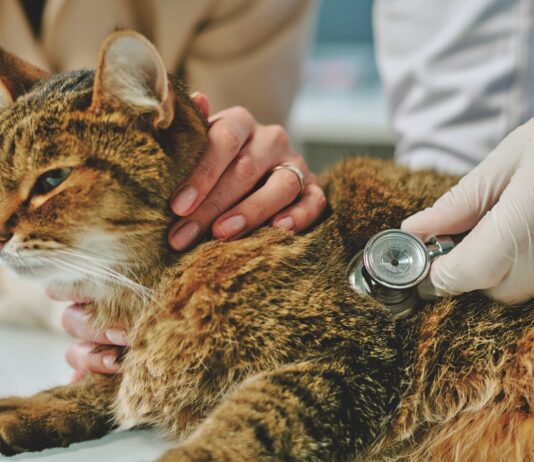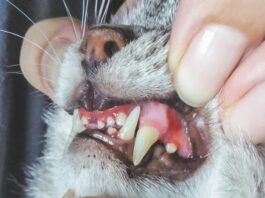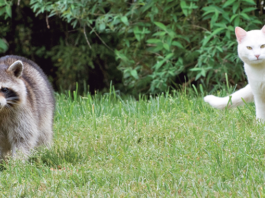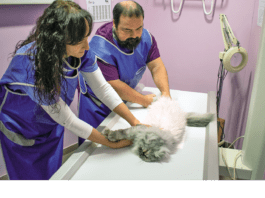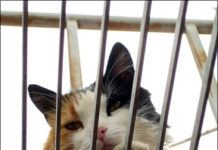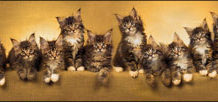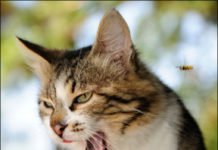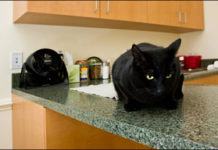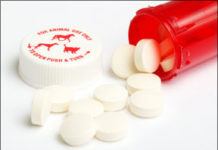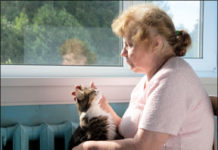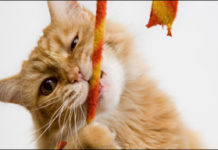Curing Ringworm in a Shelter
Ringworm (dermatophytosis) is a superficial - yet highly contagious - fungal skin infection that affects many animals, as well as humans. In healthy cats, it is generally self-curing, and should resolve over the course of several months. However, treatment will shorten the course and help to prevent it from spreading, including to humans. This is particularly important in a shelter environment where infection can negatively impact adoptions, and is a risk for staff and visitors.
Ringworm: A Hungry Fungus
Commonly referred to as ringworm, feline dermatophytosis is a fungal infection that is frequently observed in cats. The condition occurs worldwide, most commonly in warm, humid climates that are hospitable to the peculiar type of fungus that causes it. In the U.S., the disorder is especially problematic year-round in the deep South, says William Miller, VMD, a professor of dermatology at Cornell Universitys College of Veterinary Medicine, and its prevalence can rise markedly in cooler areas of the nation with the arrival of hot and muggy summer weather.
New Guidelines Released for Diabetes
The American Animal Hospital Association has recently released new guidelines for managing diabetes in cats and dogs. The "AAHA Diabetes Management Guidelines for Dogs and Cats" (www.aahanet.org/) provides current recommendations for the diagnosis, management and treatment of diabetes mellitus (DM).
Short Takes: August 2010
Diabetes mellitus (DM) is a common endocrine disease in cats, and it is becoming a model for DM in humans because cats develop a form of the disease that is similar to the human type-2 diabetes mellitus. Amylin is a normal secretory product of pancreatic beta cells, and it plays an important role in controlling nutrient fluctuations. Amylin has become an established therapy along with insulin in human diabetics because it reduces post-prandial glucagon secretion and slows gastric emptying. This study ("Amylin reduces plasma glucagon concentration in cats," The Veterinary Journal, 2010) was the first to investigate if amylin reduces plasma glucagon levels in cats.
FIP: What You Need to Know
Among the various illnesses that can bring an end to your cats life, none is more lethal than feline infectious peritonitis (FIP), which primarily affects young cats (less than two years of age) and cats that are 10 years of age and older. While the name of the disease suggests an inflammation solely involving the peritoneum - the membrane that lines the feline abdominal cavity and covers the organs that lie within it - the condition can ravage an affected animals entire system.
Danger: Poisonous Insects
The warmer weather brings sunshine, fresh breezes, singing birds - and bugs. As a conscientious pet owner, its likely that you wonder if its safe for your cat to eat bugs. The answer depends on what kind of bug youre talking about. According to Steven Hansen, DVM, ASPCA Veterinary Toxicologist and Senior Vice President of Animal Health Services of the national ASPCA Animal Poison Control Center, "most calls involve animals eating things they shouldnt, including bugs."
Understand Feline Lymphatic Disease
The feline lymphatic system influences every aspect of a cats physical health According to Margaret McEntee, DVM, a professor of oncology at Cornell Universitys College of Veterinary Medicine, owners should be able to recognize the signs that could indicate feline lymphoma, a potentially deadly cancer of the lymphatic system that can affect many areas of a cats body, including its liver, gastrointestinal system spleen and skin. Lymphoma is the most frequently observed of all feline cancers, explains Dr. McEntee - even more common than mammary cancer. At the Cornell University Hospital for Animals (CUHA), she notes, "We see about 40 cats or so each year that have this disease, and the incidence may be even higher than that at other veterinary clinics."
Short Takes: June 2010
Pet owners may not realize that retention of the tablets or capsules of certain drugs (e.g., doxycycline and clindamycin) in the esophagus of the cat can cause inflammation and stricture formation. Experts currently recommend that cats should never be given medication "dry" - instead, any pill or capsule should be followed with a food treat or a bolus of water. This study ("A comparative study evaluating the esophageal transit time of eight healthy cats when pilled with the FlavoRx pill glide versus pill delivery treats" in the Journal of Feline Medicine & Surgery, 2010) was designed to evaluate the esophageal transit time of tablets and capsules when administered with either the FlavoRx pill glide or Greenies Pill Pockets.
Home Care for the Sick Cat
When we share our lives with an animal companion, we hope that our pet will live a long, healthy and happy life. When illness strikes - especially one of a chronic nature - the devoted pet owner faces a daunting challenge. Obviously, medical care will be necessary, which can be expensive and complicated. For some, however, the more difficult aspect is the emotional component. While modern-day cats are certainly receiving better veterinary care and improved nutrition, theyre also living longer. Of course, this is a blessing for cat lovers - but age also brings with it the greater likelihood of chronic disease and illness.
Ask Elizabeth: April 2010
Is it really possible that my cat has acne? Crumbcake is a handsome, slightly chubby, brown tabby cat who we adopted from the SPCA five years ago. He has always been quite healthy; we take him to our veterinarian every year for his check-up, and we havent had any worries about him. Imagine our shock when at this years examination, our veterinarian diagnosed "chin acne" on our cat! Crumbcakes chin is a little swollen, a little red, and he has a number of what look like blackheads along the edge of his lower lips.
Dealing With Feline Diabetes
A cats health depends largely on its endocrine system, an array of small organs that manufacture chemicals called hormones and deliver them into the animals bloodstream. Once they reach their respective target destinations, hormones interact with tissues to enable bodily processes and to ensure their effectiveness. Among the components of the endocrine system is the pancreas, and perhaps the most important function of the pancreas is the manufacture of a hormone called insulin.
Short Takes: May 2010
A questionnaire-based tool was used in this study ("A Study of Owner Observed Behavioral and Lifestyle Changes in Cats with Musculoskeletal Disease Before and After Analgesic Therapy" in the Journal of Feline Medicine and Surgery, 2009) to identify behavioral and lifestyle changes that are associated with chronic pain in cats. The changes were grouped into four behavior categories (mobility, activity, grooming and temperament).

